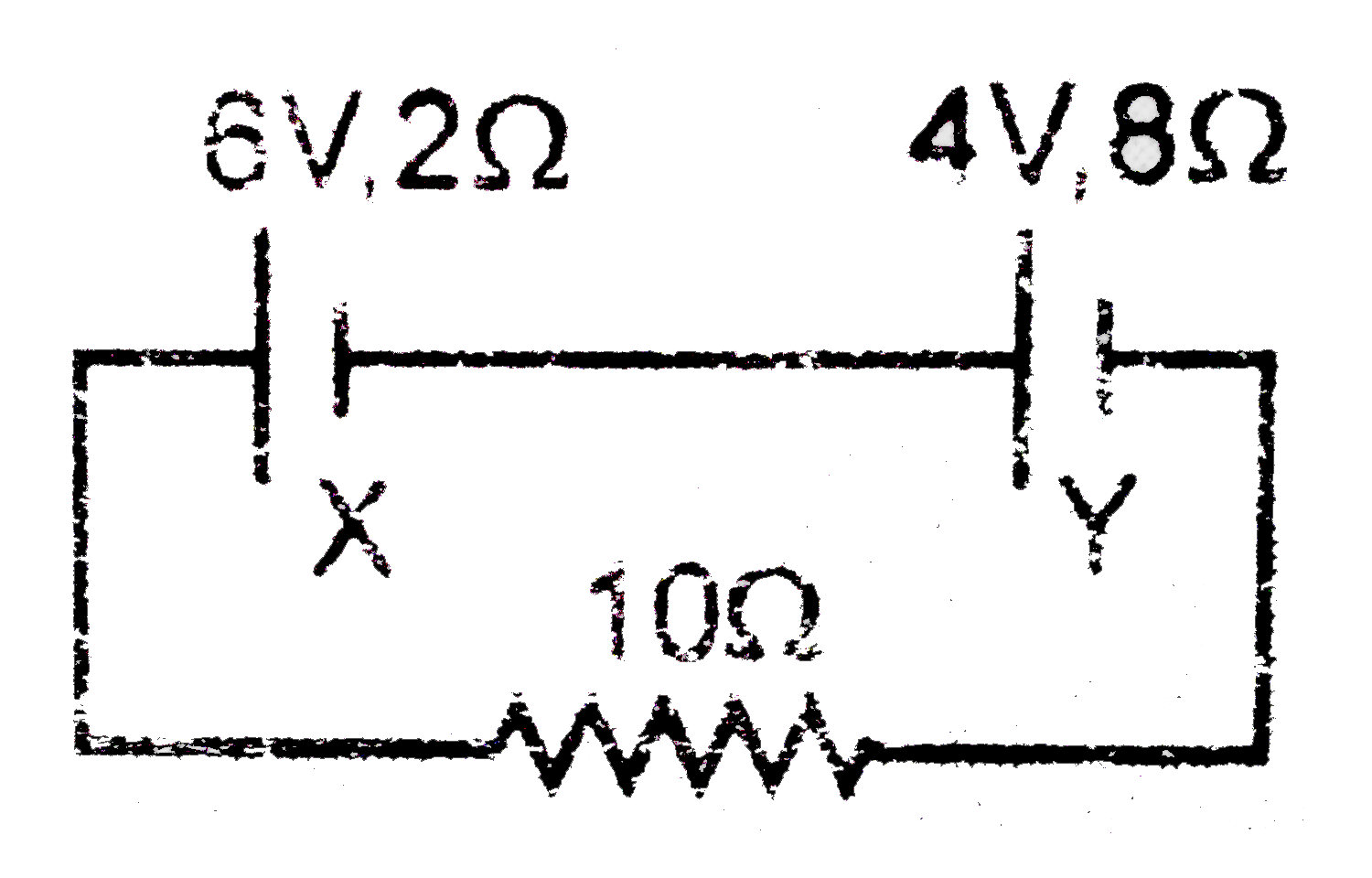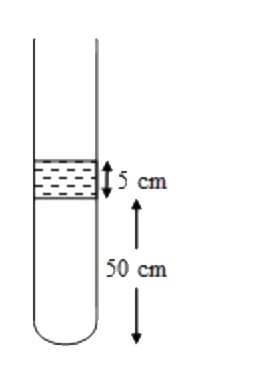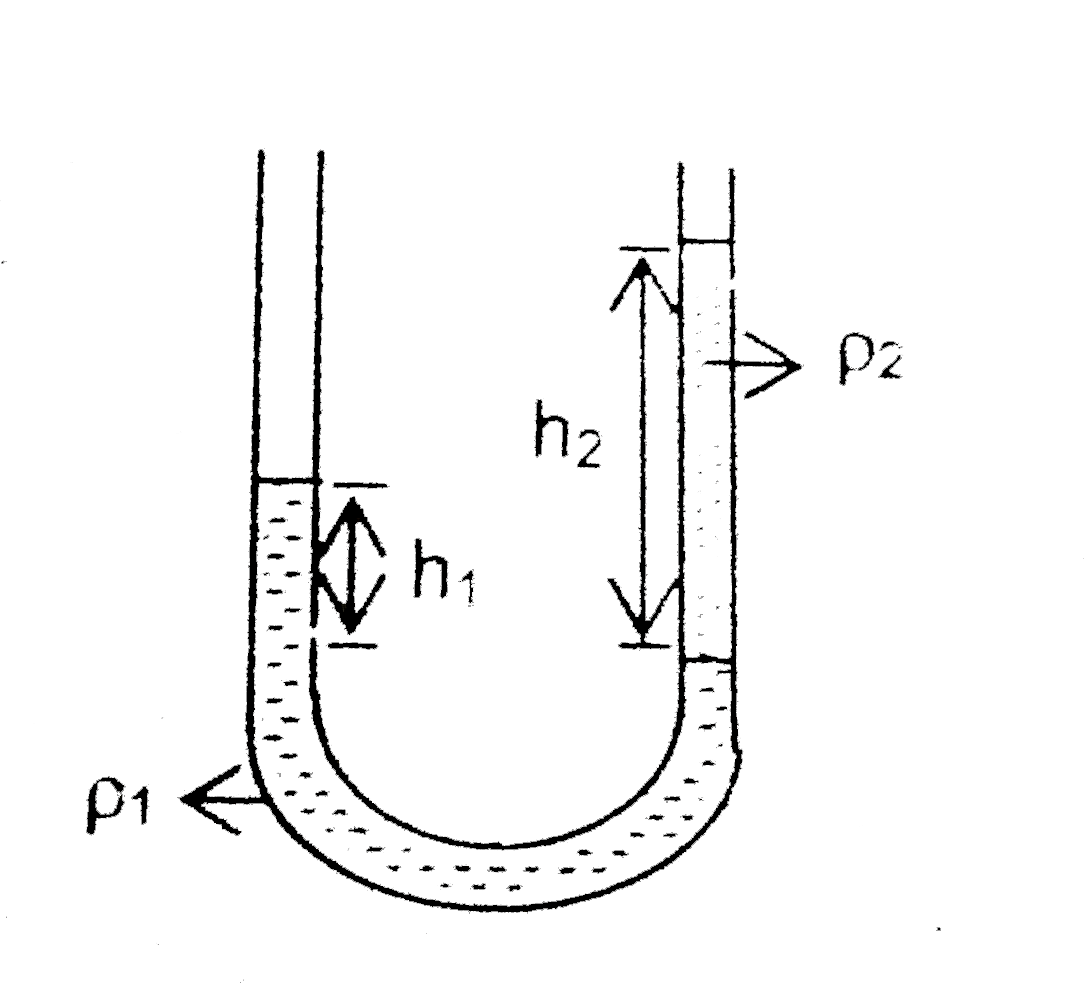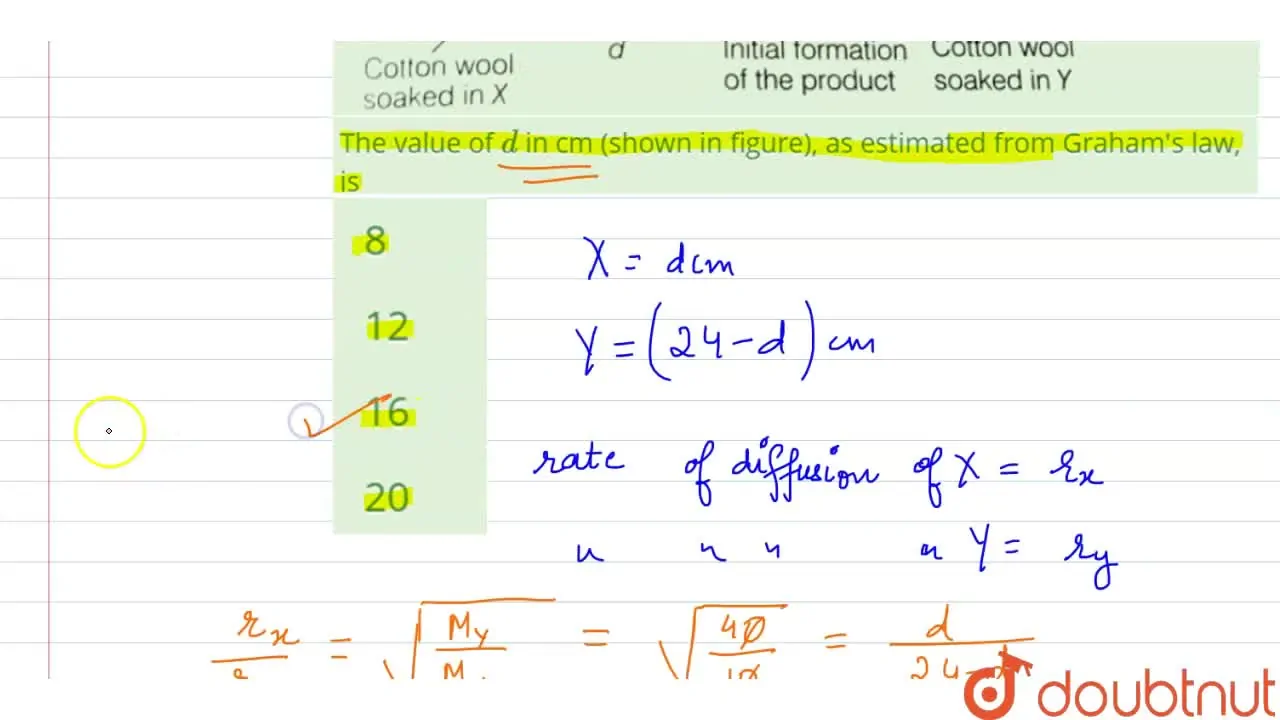X and Y are two volatile liquids with molar weights of 10gmol−1 and 40gmol−1 respectively. Two cotton plugs, one soaked in X and the other soaked in Y, are simultaneously placed at the ends of a tube of length L=24 cm, as shown in the figure.
The tube is filled with an inert gas at 1 atm pressure and a temperature of 300K. Vapours of X and Y react to form a product whichh is first observed at a distance dcm from the plug soaked in X.
Take X and Y to have equal molecular diameters and assume ideal behaviour for the inert gas and two vapours.

The value of d in cm (shown in figure), as estimated from Graham's law, is
8
12
16
20
The correct Answer is:C
PLAN: This problem can be solved by using the concept of Graham’s law of diffusion according to which rate of diffusion of non-reactive gases under similar conditions of temperature and pressure are inversely proportional to square root of their density.
Rate of diffision ∝1√molar weight of gas
Let distance covered by X is d, then distance covered by Y is 24-d.
If rXandry are the rate of diffusion of gases X and Y,
rxry=d24−d=√4010=2 [ ∵ Rate of diffusion distance travelled]
d=48−2d⇒3d−48⇒d=16cm
Related Playlists
- BOOK - VMC MODULES ENGLISHCHAPTER - STATES OF MATTEREXERCISE - ILLUSTRATION30videos
STATES OF MATTER
- BOOK - VMC MODULES ENGLISHCHAPTER - STATES OF MATTEREXERCISE - SOLVED EXAMPLES20videos
STATES OF MATTER
- BOOK - VMC MODULES ENGLISHCHAPTER - STATES OF MATTEREXERCISE - JEE-Main ( ARCHIVE )17videos
STATES OF MATTER
- BOOK - VMC MODULES ENGLISHCHAPTER - STATES OF MATTEREXERCISE - IMPECCABLE50videos
STATES OF MATTER
- BOOK - VMC MODULES ENGLISHCHAPTER - STOICHIOMETRY - IEXERCISE - JEE Advanced (Archive)31videos
STOICHIOMETRY - I
Similar Questions
Two cells X and Y are connected to a resistance of 10Ω shown in the figure. The terminal voltage of cell Y is:-
 View Solution
View SolutionA vertical tube of length 100 cm contains a mercury pallet of length 5 cm as shown in the figure. The length of the tube above mercury pallet if the tube is inverted is nearly: (atmospheric pressure = 75 cm Hg of Hg)
 View Solution
View SolutionIf one end of the diameter is (1, 1) and the other end lies on the line x+y=3 , then find the locus of the center of the circle.
View SolutionIf one end of the diameter is (1, 1) and the other end lies on the line x+y=3 , then find the locus of the center of the circle.
View SolutionThe weight of one litre of a gas at latm pressure and 300K is 4g. At what temperature the weight of the gas is 4g when the pressure is made 0.5 atm and volume is 1 litre?
View Solution
Two liquids which do not react chemically are placed in a bent tube as shown in figure. The height of the liquids above their surface of separation areView SolutionIn two containers X and Y same gas is filled. If the pressure, volume and absolute temperature of gas in X are three times as compared to that in Y and if the mass of X is mg, the mass of Y is
View SolutionTwo liquids X and Y boil at 110∘C and 130∘C, respectively. Which one of them has higher vapour pressure at 50∘C?
View Solution
A inifinite length current carrying wire is placed in x,y plane parallel to y axis as shown in figure. (All charges projected in region l)View SolutionA liquid of density ρ is filled in a U-tube is accelerated with an acceleration a so that the height of liquid in its two vertical arms are h1andh2 as shown in the figure. If l is the length of horizontal arm of the tube, the acceleration a is
 View Solution
View Solution


